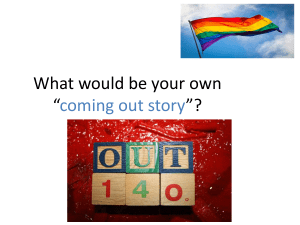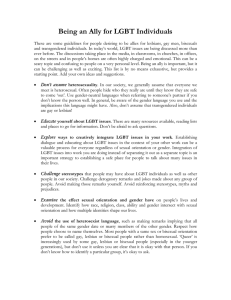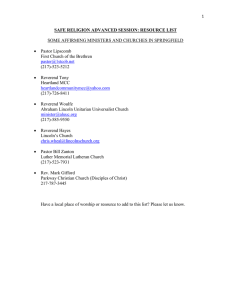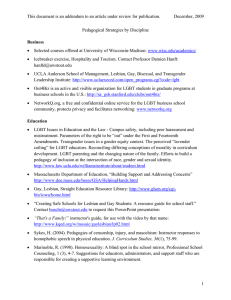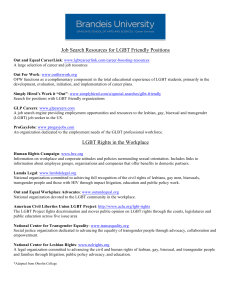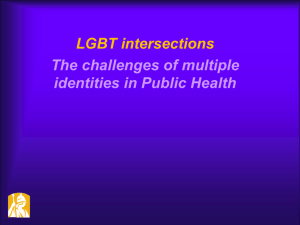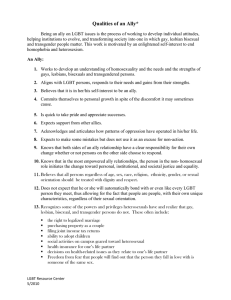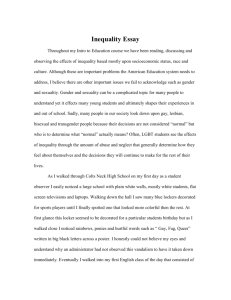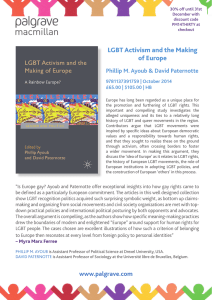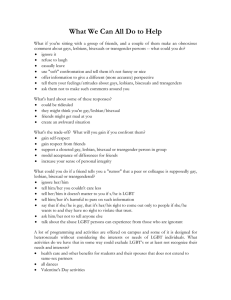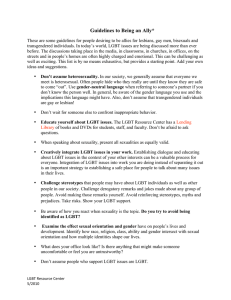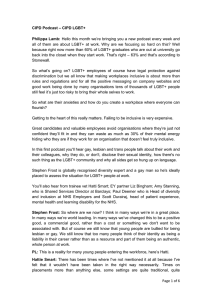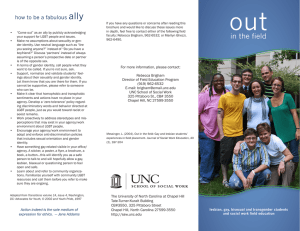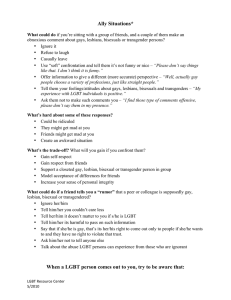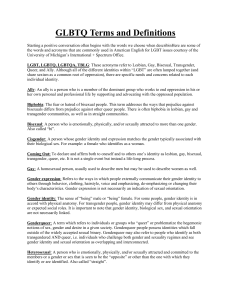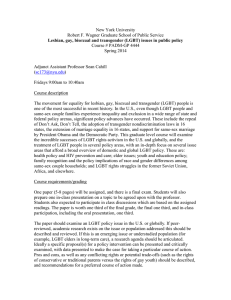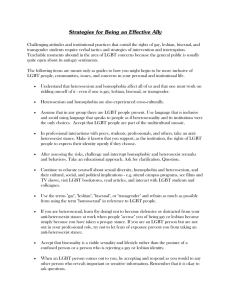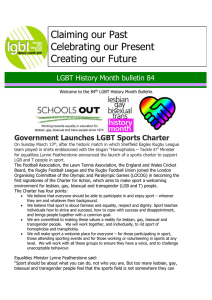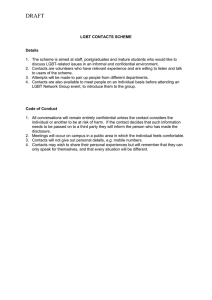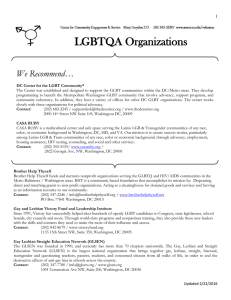case study on Healthcare Best Practice
advertisement
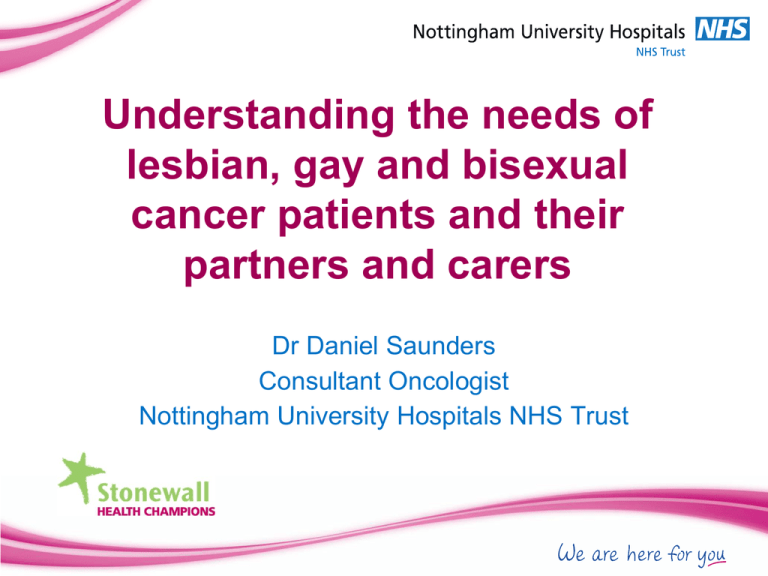
Understanding the needs of lesbian, gay and bisexual cancer patients and their partners and carers Dr Daniel Saunders Consultant Oncologist Nottingham University Hospitals NHS Trust Overview • Why this project? • Surveys and data – National/International – NUH • Training programme • Historical perspective • Why equality is not enough? Why this project? • New patient seen on 2 Jan 2013 – Gay man with localised prostate cancer – Choices – Info and support available • Previous work with GLADD • Stonewall leadership programme Data – National/International • Limited • NHS does not routinely monitor • Various ad hoc surveys – possible bias – Stonewall – YouGov • National Cancer patient survey Data – NUH LGBT Cancer Survey • Pilot at Nottingham Pride • Roll-out in cancer-related outpatient areas • Wide publicity through local LGBT community Data – Startlingly similar results The Cancer Patient Experience Survey (2013) found differences between LGB&T and heterosexual people relating to comms as well as respect and dignity when receiving cancer treatment. More negative responses were found from LGB&T people in regard to: • Doctors and ward nurses never talked in front of patient as if they were not there • Never felt treated as a set of cancer symptoms rather than as a whole person • Always treated with respect and dignity by hospital staff • Hospital staff always did everything they could to control their pain • Patient given privacy when discussing condition and treatment, and when examined or treated • Doctors/nurses never deliberately did not tell patient things they wanted to know Suggestions for improvement Research has also identified that lesbian, gay and bisexual cancer patients have felt that their treatment could have been improved, by considering their particular needs (to be explored further). Topics include: •Environments conducive to ‘coming out’ to health care professionals •Including partners and carers •Access to relevant support •Access to relevant info (assumed heterosexuality and info not tailored to different behaviours etc.) Nottingham data • Very similar • (Also matched by data from US and Australasia) • Two things stand out: – Comments and concerns about primary care – LGBT patients attending consultations on their own NUH LGBT Cancer Training • • • • Workshops covering over 200 staff Interactive Excellent feedback Too early to know how much this has changed practice • Need to consider how we might extend this to primary care Lone attenders • Strikingly different to heterosexual cancer patients • We need to understand why: – Fear of homophobic attitude of staff? – “Option” to conceal sexual orientation – Patients not seeing relevance of sexual orientation – Is the fear of homophobia based on recent or past experiences of health care? • Brief case study A historical perspective • • • • • • • Professor David Harvey Entered clinical training in 1957 Illegal to be gay until 1967 Doctors and medical students faced being struck of by the GMC David achieved great things in his career including becoming Professor of Paediatrics and Neonatal Medicine at the Hammersmith He was also the Royal Paediatrician for many years including looking after Princes William and Harry He was never afraid to be honest about his sexual orientation Healthcare and “Caring” • 1994 – DSM IV(R) removed homosexuality as a classified psychiatric disorder (Robert Cabaj) • Electroaversion therapy still available in West Mids in 2001 Macmillan Living with Cancer: Focus on Equality project • Completed end of November 2014 • Significant feedback from LGBT patients about lack of understanding/empathy with their personal situation To empathise with patients you need to move beyond equality Some progress • Thank you for helping us to make more progress
